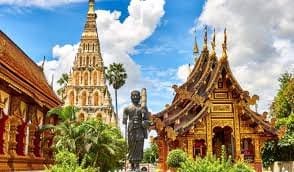Thailand is located in the center of mainland Southeast Asia. It is popular for its tropical beaches, lavish royal palaces, and decorated temples depicting the figures of Buddha. It is located within the tropics, Thailand witness ecosystem diversity including hilly forested areas in the north, fertile rice fields of the central Plains, broad plateau of the north-east, and rugged coast along to Southern Peninsula. Thailand shares its borders with Myanmar, Cambodia, Malaysia, and Laos. Until 1939, Thailand was officially known as Siam. Until a revolution in 1932, Siam was ruled by an absolute monarchy and after the revolution, it has been a constitutional monarchy and constitutions have been provided for an elected parliament. Political authority has always been vested with the military. During the last two decades of the 20th century and the first decade of the 21st century, parliamentary democracy has gained persistent popular support.
Ethnic Group
Thailand has always witnessed a group of people from diversified cultural, religious, and linguistic backgrounds. The population of Thailand includes a vast majority of successors of speakers of Thai language and minority important members speak the Malay language. Apart from the above-mentioned group, noticeable ancient minorities also include the speakers of Mon, Khmer, and other Mon-Khmer languages. Thailand also serves as a home to large immigrants from China and other parts of South Asia.
Religion
The majority of people in Thailand are followers of Buddhism. The Theravada tradition of Buddhism in Thailand was influenced by Sri Lanka and is shared by people in Myanmar, Cambodia, Southern parts of China, Laos, and Southern Vietnam. The monk’s community is primary to this tradition. In Thailand, every settlement has at least one monastery where communal rituals take place by the monks in Yellow robes.
 Thai religion also has a blend of beliefs and practices from the local religion and Hinduism. Holy temples are found throughout the country and the Shine to Brahma at the Erawan Hotel in Bangkok attracts hundred on visitors each day. Although Buddhism is the dominant religion in Thailand it also has an important minority section of Muslims and a tiny fraction of Thai have converted to Roman Catholicism or Protestantism.
Thai religion also has a blend of beliefs and practices from the local religion and Hinduism. Holy temples are found throughout the country and the Shine to Brahma at the Erawan Hotel in Bangkok attracts hundred on visitors each day. Although Buddhism is the dominant religion in Thailand it also has an important minority section of Muslims and a tiny fraction of Thai have converted to Roman Catholicism or Protestantism.
Culture of Thailand
Thailand in spite of being a remarkable or noteworthy tourist destination with beachside paradise has kept hold of its cultural uprightness, unity, and honor. Thailand offers everything from beaches to forests, primeval monasteries to coral reefs, Buddhist monks to Bramha Shrine, and plentiful food to treat your taste buds. The Thai culture has many singularities, some of them are –
- In Thailand family always comes first and matters the most. In Thailand people do not
 refer siblings as cousins, rather refer to the cousins are their own brothers and sisters.
refer siblings as cousins, rather refer to the cousins are their own brothers and sisters. - The status of people in Thailand is a huge thing. Family connections, job types, education, income levels are the contributing factor to the person’s status.
- The people in Thailand have huge patriotism and the country is proud to be the only nation in Southeast Asia to have never been colonized by European countries.
- Thailand is considered to be the land of superstitions. It is customary for the people to consult a fortune-teller or monk for any auspicious date. Thailand also hosts a range of cultural events, which can prove exciting and enriching for tourists. Taking the time to learn Thai online before your trip to Thailand enables you to make the most of these events and really immerse yourself in the culture and traditions of the locals.
Traditional costumes of Thailand
- Chut Thai – Its literal meaning is the Thai outfit. It is worn during the various festivals wedding ceremonies or religious ceremonies.

- Suea Phraratchathan – It is the traditional dress for men in Thailand with the literal meaning of royalty bestowed shirt. It is a long sleeve, extended collar, bottom-up shirt with a waistband for formal occasions. The shirt worn by the men is inspired by the Nehru jacket. The Pakama, if a large rectangular fabric piece used by men to wrap around the waist.

- Ruean Ton – This outfit is one of the traditional dresses of Thailand for women and it is worn during the non-official function. The dress consists of a tube-like skirt with a collarless blouse having a row of buttons at the front and elbow-length sleeves. The shirt is tucked into the skirt.

- Chakkri – It is one of the most popular and desired traditional dresses in Thailand. Chakkri gives appraised graceful, sophisticated, and formal attire. Chakkri consists of the two-pieces skirt and Sabai. The dress has a long tube skirt with two front pleats. Sabai is an upper garment made up of silk and trails to the ground. The dress is embellished by the gold jewelry.

- Siwalai – Siwalai is a one-piece garment made by stitching two pieces together. The dress has a long tube skirt with pleats and a blouse with elbow-length sleeves stitched together. This dress mainly suits you for the royal functions.

- Boromphiman – This is the traditional dress of Thailand and is worn by women on formal and semi-formal functions. It is prepared by sewing the skirt and the blouse together. The brocaded skirt gives a lavish and sophisticated look. The shirt has a round neck, long sleeves and is generally tucked in.

- Chitlada – This dress is best suited for the daytime formal and official ceremonies. This dress comprises of a long brocaded skirt and a blouse with golden buttons on the front. The embroidery at the border of the skirt adorns the look.

- Amarin – This dress is worn during the royal events. It is evening attire made up of brocaded fabric with long sleeves blouse and a round neck. The look is completed with Royal ornaments.

- Chakkraphat – The name means Emporer appending dignity and magnificence to the dress. This dress is worn by ladies during the royal functions. The dress has a long tube-like skirt and the top accompanied with a luxurious shawl wrapped in such a way as to leave one shoulder bare. The dress is embroidered and elaborated with intricate patterns.

- Dusit – This dress is a Semi-formal and more westernized form of traditional Thai dresses suited for evening ceremonies. The dress can be one-piece with a skirt and blouse stitched together or as two separate pieces. It is a Silk, round neck, and sleeveless dress accompanied by a belt.
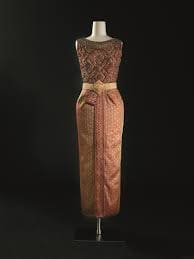
Traditional Thai food
Thai offers plentiful food to treat the visitor’s taste buds and any western restaurant can become creative with the Thai menu. Thai provide mouth-watering dishes using assorted ingredients, Complex spices, and exotic herbs.
- Massaman Curry – The dish offers spicy flavors. It is prepared with spices like cardamom, cinnamon, and anise mixed with aromatized paste fried in a pan with coconut cream and turmeric paste.

- Pad Kra Prao – Pad Kra Prao is the greasy, minced pork stir-fried with Basil, fish sauce, and chopped chilies. This dish is served with steamed Jasmine rice. The dish can be served with other variations including beef, chicken, or seafood ingredients stir-fried with cowpeas, bamboo shoots, and a fried egg.
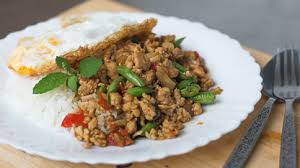
- Khao Soi – It is a yellow curry rice noodle served in a single bowl with boiled egg noodles and deep-fried egg noodles seasoned with green shallots, pickled cabbage, minced pork, or chicken leg as a topping.

- Yam Nua – It is a long beef salad Thai dish made up of thinly sliced beef, tenderloin strips, fresh spearmint, chopped shallots, onion, garlic, chilies, and seasoned with lime juice and fish sauce.
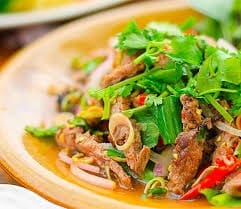
- Pad Woon Sen – it is a classic stir-fried glass noodles dish with preferred noodles described with prawns shallots garlic cloves vegetables and scrambled eggs. It is seasoned with oyster sauce and garnished with chopped coriander and Mung Bean sprouts

Embroidery of Thailand
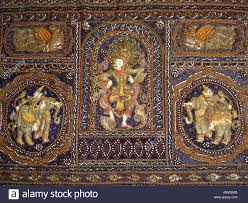
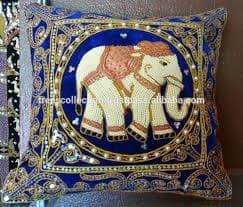
Thailand is well known and renowned for its embroidery and textiles using silk. People in remote areas create distinctive patterns using hand-dyed silk thread. The embroidery in Thailand is inspired by the way of life, Thai literature, the lifestyle of people, customs and traditions, historical scenes, flora, and fauna. The accuracy of these artists converts the dyed silk threads into remarkable art creation. The embroidery artist uses myriad hues to dye original raw silk thread and use hand-dyed thread to produce astonishing patterns and pieces of art.
The different part of the country is famous for different embroidery patterns
- Northern Thailand is famous for fabricating unique and distinctive embroidery patterns using gold and silver thread. The region is famous for seed embroidery, applique work, and chain stitching.

- Southern Thailand is highly influenced by Malaysia and Indonesia in terms of the handicrafts and textiles. The exceptional uncommon Pha Yok textile is women and this textile is preferred by the royals.

- North-East Thailand is renowned for its silk and cotton textiles, having signature fabrics for each village. Mudmee Silk is a popular silk type and known as a Queen of Thai silk.
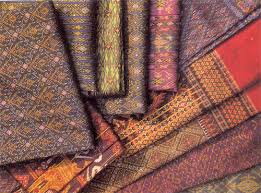
Article Written By –
Naina Rupani, Management Trainee – TVC
FOSTIIMA Business School
navyarupani09@gmail.com

